Performance Evaluation of an On-Body Wireless Body Network Based on an Ultra-Wideband Physical Layer under a Dynamic Channel Model
Abstract
1. Introduction
2. Related Work
3. Materials and Methods
3.1. IEEE 802.15.6 UWB PHY
3.1.1. Operating Frequency Bands and Spectral Mask
3.1.2. PHY Frame Format
3.1.3. Modulation and Pulse Shaping
3.2. UWB-WBAN Dynamic Channel Model
3.3. System Model
4. Results
4.1. Computer Simulation Parameters
4.2. Single Pulse Option
4.3. Burst Pulse Option
5. Discussion
6. Conclusions
Author Contributions
Funding
Institutional Review Board Statement
Informed Consent Statement
Data Availability Statement
Conflicts of Interest
References
- Gatouillat, A.; Badr, Y.; Massot, B.; Sejdić, E. Internet of Medical Things: A Review of Recent Contributions Dealing with Cyber-Physical Systems in Medicine. IEEE Internet Things J. 2018, 5, 3810–3822. [Google Scholar] [CrossRef]
- Limaye, A.; Adegbija, T. HERMIT: A Benchmark Suite for the Internet of Medical Things. IEEE Internet Things J. 2018, 5, 4212–4222. [Google Scholar] [CrossRef]
- Sun, L.; Jiang, X.; Ren, H.; Guo, Y. Edge-Cloud Computing and Artificial Intelligence in Internet of Medical Things: Architecture, Technology and Application. IEEE Access 2020, 8, 101079–101092. [Google Scholar] [CrossRef]
- Alshehri, F.; Muhammad, G. A Comprehensive Survey of the Internet of Things (IoT) and AI-Based Smart Healthcare. IEEE Access 2021, 9, 3660–3678. [Google Scholar] [CrossRef]
- Dwivedia, R.; Mehrotrab, D.; Chandrac, S. Potential of Internet of Medical Things (IoMT) applications in building a smart healthcare system: A systematic review. J. Oral Biol. Craniofacial Res. 2022, 12, 302–318. [Google Scholar] [CrossRef] [PubMed]
- Ning, Z.; Dong, P.; Wang, X.; Hu, X.; Guo, L.; Hu, B.; Guo, Y.; Qiu, T.; Kwok, R.Y. Mobile Edge Computing Enabled 5G Health Monitoring for Internet of Medical Things: A Decentralized Game Theoretic Approach. IEEE J. Sel. Areas Commun. 2021, 39, 463–478. [Google Scholar] [CrossRef]
- Blunda, L.L.; Gutiérrez-Madroñal, L.; Wagner, M.F.; Medina-Bulo, I. A Wearable Fall Detection System Based on Body Area Networks. IEEE Access 2020, 8, 193060–193074. [Google Scholar] [CrossRef]
- Mehmood, G.; Khan, M.Z.; Waheed, A.; Zareei, M.; Mohamed, E.M. A Trust-Based Energy-Efficient and Reliable Communication Scheme (Trust-Based ERCS) for Remote Patient Monitoring in Wireless Body Area Networks. IEEE Access 2020, 8, 131397–131413. [Google Scholar] [CrossRef]
- Moin, A.; Thielens, A.; Araujo, A.; Sangiovanni-Vincentelli, A.; Rabaey, J.M. Adaptive Body Area Networks Using Kinematics and Biosignals. IEEE J. Biomed. Health Inform. 2021, 25, 623–633. [Google Scholar] [CrossRef]
- Misra, S.; Bishoyi, P.K.; Sarkar, S. i-MAC: In-Body Sensor MAC in Wireless Body Area Networks for Healthcare IoT. IEEE Syst. J. 2021, 15, 4413–4420. [Google Scholar] [CrossRef]
- Shen, S.; Qian, J.; Cheng, D.; Yang, K.; Zhang, G. A Sum-Utility Maximization Approach for Fairness Resource Allocation in Wireless Powered Body Area Networks. IEEE Access 2019, 7, 20014–20022. [Google Scholar] [CrossRef]
- Javaid, S.; Zeadally, S.; Fahim, H.; He, B. Medical Sensors and Their Integration in Wireless Body Area Networks for Pervasive Healthcare Delivery: A Review. IEEE Sens. J. 2022, 22, 3860–3877. [Google Scholar] [CrossRef]
- Selem, E.; Fatehy, M.; El-Kader, S.M.A. mobTHE (Mobile Temperature Heterogeneity Energy) Aware Routing Protocol for WBAN IoT Health Application. IEEE Access 2021, 9, 18692–18705. [Google Scholar] [CrossRef]
- Ar-Reyouchi, E.M.; Ghoumid, K.; Yahiaoui, R.; Elmazria, O. Optimized Reception Sensitivity of WBAN Sensors Exploiting Network Coding and Modulation Techniques in an Advanced NB-IoT. IEEE Access 2022, 10, 35784–35794. [Google Scholar] [CrossRef]
- Caballero, E.; Ferreira, V.; Lima, R.A.; Soto, J.C.H.; Muchaluat-Saade, D.; Albuquerque, C. BNS: A Framework for Wireless Body Area Network Realistic Simulations. Sensors 2021, 21, 5504. [Google Scholar] [CrossRef]
- IEEE Standard for Information Technology—Telecommunications and Information Exchange between Systems—Local and Metropolitan Area Networks; Specific Requirements: Part 15.6: Wireless Medium Access Control (MAC) and Physical Layer (PHY) Specifications for Wireless Personal Area Networks (WPANs) Used in or 12 around a Body. 2012. Available online: https://ieeexplore.ieee.org/document/6161600 (accessed on 30 June 2022).
- Smart Body Area Network (SmartBAN); Low Complexity Medium Access Control (MAC) for SmartBAN. ETSI TC Smart BAN TS 103 325 V1.1.1. 2015. Available online: http://www.etsi.org/deliver/etsi_ts/103300_103399/103325/01.01.01_60/ts_103325v010101p.pdf (accessed on 30 June 2022).
- Smart Body Area Network (SmartBAN); Enhanced Ultra-Low Power Physical Layer. ETSI TC Smart BAN TS 103 326 V1.1.1. 2015. Available online: https://www.etsi.org/deliver/etsi_ts/103300_103399/103326/01.01.01_60/ts_103326v010101p.pdf (accessed on 30 June 2022).
- Sanguanpuak, C.; Bunlaksananusorn, C.; Promwong, S. Distortion Analysis of the HB-UWB Transmission Waveform for WBAN Applications. In Proceedings of the 2018 Global Wireless Summit (GWS), Chiang Rai, Thailand, 25–28 November 2018. [Google Scholar]
- Mahmood, S.N.; Ishak, A.J.; Ismail, A.; Soh, A.C.; Zakaria, Z.; Alani, S. ON-OFF Body Ultra-Wideband (UWB) Antenna for Wireless Body Area Networks (WBAN): A Review. IEEE Access 2020, 8, 150844–150863. [Google Scholar] [CrossRef]
- Elhelbawy, M. Wireless Body Area Networks UWB Antenna Design and Channel Modeling. In Proceedings of the 2020 International Applied Computational Electromagnetics Society Symposium (ACES), Monterey, CA, USA, 27–31 July 2020. [Google Scholar]
- Balevi, E.; Gitlin, R.D. Stochastic geometry analysis of IEEE 802.15.6 UWB WBAN performance with game theoretical power management. In Proceedings of the 2018 IEEE 19th Wireless and Microwave Technology Conference (WAMICON), Sand Key, FL, USA, 9–10 April 2018. [Google Scholar]
- Zilani, T.A.; Al-Turjman, F.; Khan, M.B.; Zhao, N.; Yang, X. Monitoring Movements of Ataxia Patient by Using UWB Technology. Sensors 2020, 20, 931. [Google Scholar] [CrossRef]
- Kumpuniemi, T.; Hämäläinen, M.; Tuovinen, T.; Yazdandoost, K.Y.; Iinatti, J. Radio channel modelling for pseudo-dynamic WBAN on-body UWB links. In Proceedings of the 2014 8th International Symposium on Medical Information and Communication Technology (ISMICT), Firenze, Italy, 2–4 April 2014. [Google Scholar]
- Kumpuniemi, T.; Hämäläinen, M.; Yazdandoost, K.Y.; Iinatti, J. Dynamic on-body UWB radio channel modeling. In Proceedings of the 2015 9th International Symposium on Medical Information and Communication Technology (ISMICT), Kamakura, Japan, 24–26 March 2015. [Google Scholar]
- Kumpuniemi, T.; Hämäläinen, M.; Yazdandoost, K.Y.; Iinatti, J. Categorized UWB on-Body Radio Channel Modeling for WBANs. Prog. Electromagn. Res. B 2016, 67, 1–16. [Google Scholar] [CrossRef][Green Version]
- Kosz, P.T.; Ambroziak, S.J.; Stefanski, J.; Cwalina, K.K.; Correia, L.M.; Turbic, K. An Empirical System Loss Model for Body Area Networks in a Passenger Ferry Environment. In Proceedings of the Baltic URSI Symposium, Poznan, Poland, 14–17 May 2018. [Google Scholar]
- van Roy, S.; Quitin, F.; Liu, L.; Oestges, C.; Horlin, F.; Dricot, J.M.; Doncker, P.D. Dynamic Channel Modeling for Multi-Sensor Body Area Networks. IEEE Trans. Antennas Propag. 2013, 61, 2200–2208. [Google Scholar] [CrossRef]
- Maskooki, A.; Soh, C.B.; Gunawan, E.; Low, K.S. Ultra-Wideband Real-Time Dynamic Channel Characterization and System-Level Modeling for Radio Links in Body Area Networks. IEEE Trans. Microw. Theory Tech. 2013, 61, 2995–3004. [Google Scholar] [CrossRef]
- Yazdandoost, K.Y.; Sayrafian-Pour, K. Channel Model for Body Area Network (BAN). IEEE P802.15 Working Group for Wireless Personal Area Networks (WPANs), IEEE P802.15-08-0780-10-0006. 2009. Available online: https://mentor.ieee.org/802.15/file/08/15-08-0780-10-0006-tg6-channel-model.pdf (accessed on 4 July 2022).
- Dautov, R.; Tsouri, G.R. Dynamic Off-Body Rician Channel Modeling for Indoor Wireless Body Area Networks. IEEE J. Biomed. Health Inform. 2020, 24, 1246–1254. [Google Scholar] [CrossRef] [PubMed]
- Liu, J.; Shao, Y.; Wang, P.; Zhang, J. Dynamic Channel Modeling of WBAN at 28 GHz. In Proceedings of the 2020 IEEE International Symposium on Antennas and Propagation and North American Radio Science Meeting, Montreal, QC, Canada, 5–10 July 2020. [Google Scholar]
- Decawave Application Note: APR 001. UWB Regulations—A Summary of Worldwide Telecommunications Regulations Governing the Use of Ultra-Wideband Radio. 2018. Available online: https://www.decawave.com/sites/default/files/apr001_uwb_worldwide_regulations_summaryrev1.2.pdf (accessed on 11 January 2022).
- Karvonen, H.; Iinatti, J.; Hämäläinen, M. A cross-layer energy efficiency optimization model for WBAN using IR-UWB transceivers. Telecommun. Syst. 2015, 58, 165–177. [Google Scholar] [CrossRef]
- Jajodia, B.; Shaik, R.A.; Mahanta, A. PPM demodulation schemes for IEEE 802.15.6 IR-UWB WBAN receivers. In Proceedings of the 2015 IEEE International Conference on Signal Processing, Informatics, Communication and Energy Systems (SPICES), Kozhikode, India, 19–21 February 2015. [Google Scholar]
- Ding, J.; Dutkiewicz, E.; Huang, X. Performance evaluation of virtual MIMO for UWB based body area networks. In Proceedings of the 2013 7th International Symposium on Medical Information and Communication Technology (ISMICT), Tokyo, Japan, 6–8 March 2013. [Google Scholar]
- Takabayashi, K.; Tanaka, H.; Sugimoto, C.; Sakakibara, K.; Kohno, R. Performance Evaluation of Quality of Service Control Scheme in Multi-hop WBAN Based on IEEE 802.15.6. Sensors 2018, 18, 3969. [Google Scholar] [CrossRef] [PubMed]
- Takabayashi, K.; Tanaka, H.; Sakakibara, K. Toward Dependable Internet of Medical Things: IEEE 802.15.6 Ultra-Wideband Physical Layer Utilizing Superorthogonal Convolutional Code. Sensors 2022, 22, 2172. [Google Scholar] [CrossRef] [PubMed]
- Choudhury, N.; Matam, R.; Mukherjee, M.; Lloret, J. A Performance-to-Cost Analysis of IEEE 802.15.4 MAC With 802.15.4e MAC Modes. IEEE Access 2020, 8, 41936–41950. [Google Scholar] [CrossRef]
- Moravejosharieh, A.; Lloret, J. Performance evaluation of co-located IEEE 802.15.4-based wireless body sensor networks. Ann. Telecommun. 2016, 71, 425–440. [Google Scholar] [CrossRef]
- Niemelä, V.; Hämäläinen, M.; Iinatti, J. On IEEE 802.15.6 IR-UWB receivers—Simulations for DBPSK modulation. In Proceedings of the 2013 35th Annual International Conference of the IEEE Engineering in Medicine and Biology Society (EMBC), Osaka, Japan, 3–7 July 2013. [Google Scholar]
- Jajodia, B.; Shaik, R.A.; Mahanta, A. Demodulation techniques for IEEE 802.15.6 IR-UWB DBPSK WBAN transceivers. In Proceedings of the 2015 IEEE 3rd International Conference on Smart Instrumentation, Measurement and Applications (ICSIMA), Kuala Lumpur, Malaysia, 24–25 November 2015. [Google Scholar]
- Takabayashi, K.; Karvonen, H.; Paso, T.; Tanaka, H.; Sugimoto, C.; Kohno, R. Performance Evaluation of a QoS-aware Error Control Scheme for Multiple-WBAN Environment. IEEJ Trans. Electr. Electron. Eng. 2017, 12, S146–S157. [Google Scholar] [CrossRef]
- McEliece, R.; Dolinar, S.; Pollara, F.; Van Tilborg, H. Some easily analyzable convolutional codes. Telecommun. Data Acquis. Report. 1989, 42, 105–114. [Google Scholar]
- Johannesson, R.; Zigangirov, K.S. Fundamentals of Convolutional Coding, 2nd ed.; Wiley-IEEE Press: Hoboken, NJ, USA, 2005; pp. 593–626. [Google Scholar]
- Frenger, P.; Orten, P.; Ottosson, T. Code-spread CDMA using maximum free distance low-rate convolutional codes. IEEE Trans. Commun. 2000, 48, 135–144. [Google Scholar] [CrossRef]
- Viterbi, A.J. Very low rate convolution codes for maximum theoretical performance of spread-spectrum multiple-access channels. IEEE J. Sel. Areas Commun. 1990, 8, 641–649. [Google Scholar] [CrossRef]
- Matsumoto, T.; Kohno, R. Performance of Super-Orthogonal Convolutional Coding for Ultra-Wideband Systems in Multipath and Multiuser Channels. Wirel. Pers. Commun. 2007, 40, 355–370. [Google Scholar] [CrossRef]
- Takabayashi, K.; Tanaka, H.; Sakakibara, K. Toward an Advanced Human Monitoring System Based on a Smart Body Area Network for Industry Use. Electronics 2021, 10, 688. [Google Scholar] [CrossRef]
- DWM1001 Datasheet, Decawave Ltd., Ver. 1.10. 2017. Available online: https://www.decawave.com/wp-content/uploads/2019/01/DWM1001_Datasheet-1.4.pdf (accessed on 11 January 2022).
- Abughalieh, N.; Steenhaut, K.; Now´e, A.; Anpalagan, A. Turbo codes for multihop wireless sensor networks with de-code-and-forward mechanism. EURASIP J. Wirel. Commun. Netw. 2014, 204, 1–13. [Google Scholar]
- Goel, M.; Shanbhag, N.R. Low-power channel coding via dynamic reconfiguration. In Proceedings of the 1999 IEEE Interna-tional Conference on Acoustics, Speech, and Signal Processing, ICASSP99, Phoenix, AZ, USA, 15–19 March 1999. [Google Scholar]
- Khan, S.; Arslan, T.; Ratnarajah, T. Digital Twin Perspective of Fourth Industrial and Healthcare Revolution. IEEE Access 2022, 10, 25732–25754. [Google Scholar] [CrossRef]
- Bhatti, D.S.; Saleem, S.; Imran, A.; Iqbal, Z.; Alzahrani, A.; Kim, H.; Kim, K.-I. A Survey on Wireless Wearable Body Area Networks: A Perspective of Technology and Economy. Sensors 2022, 22, 7722. [Google Scholar] [CrossRef]

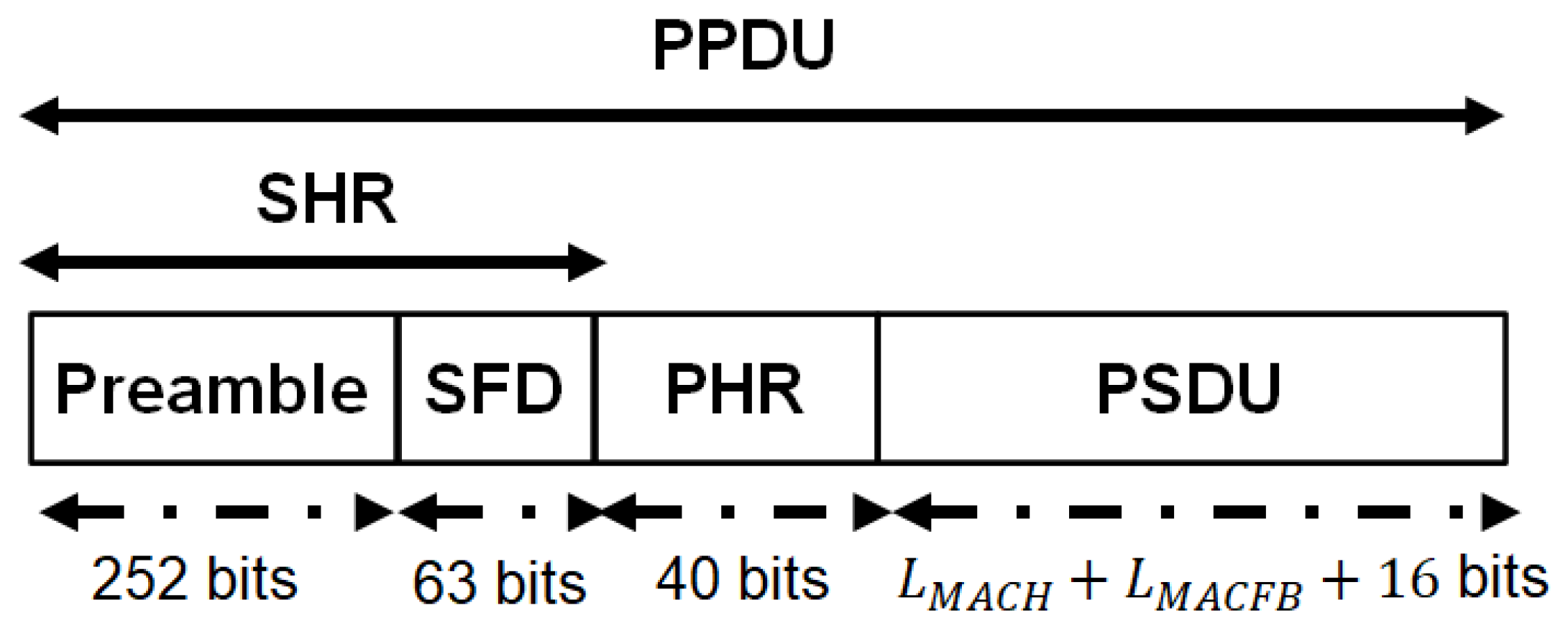
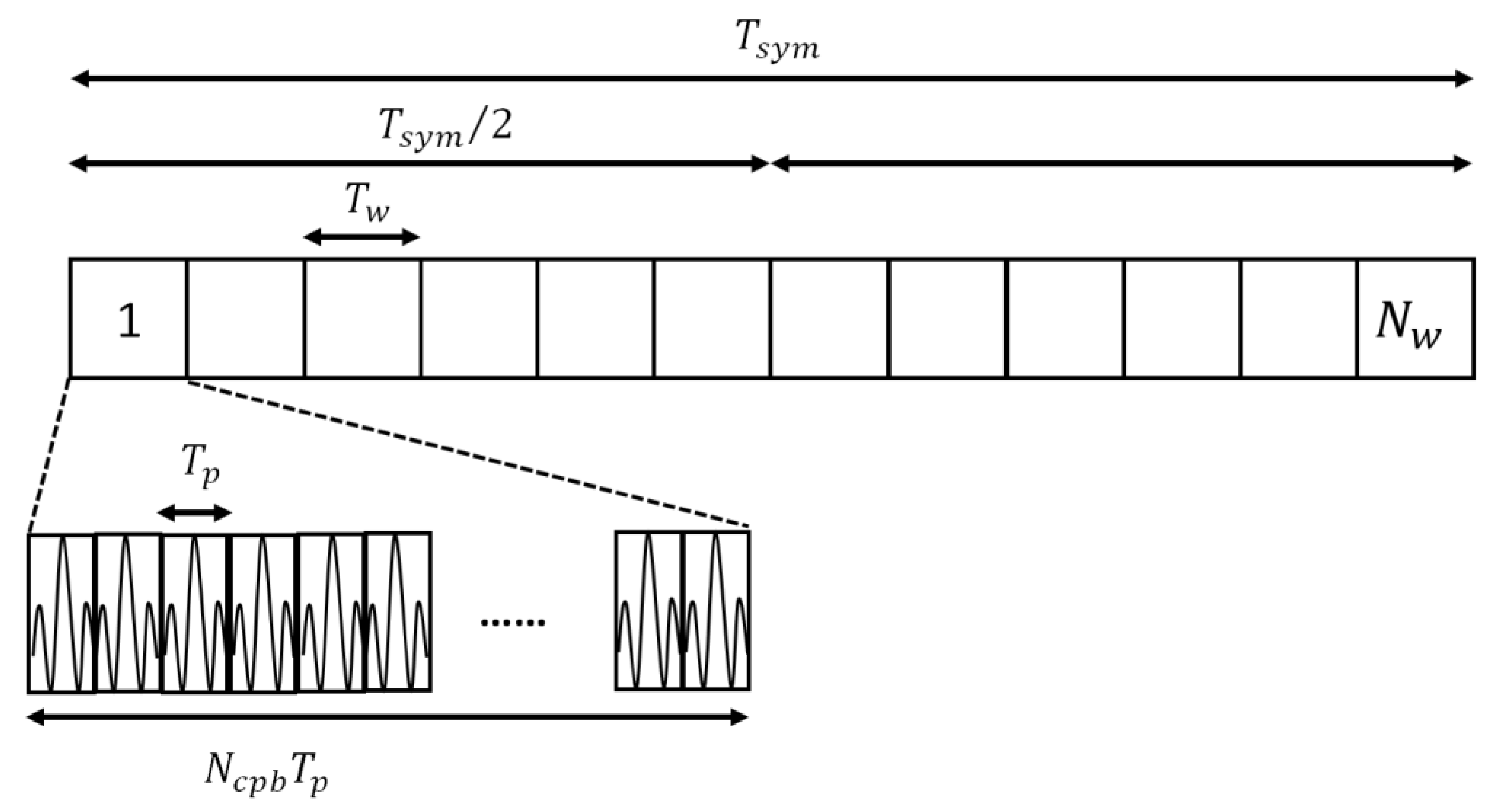

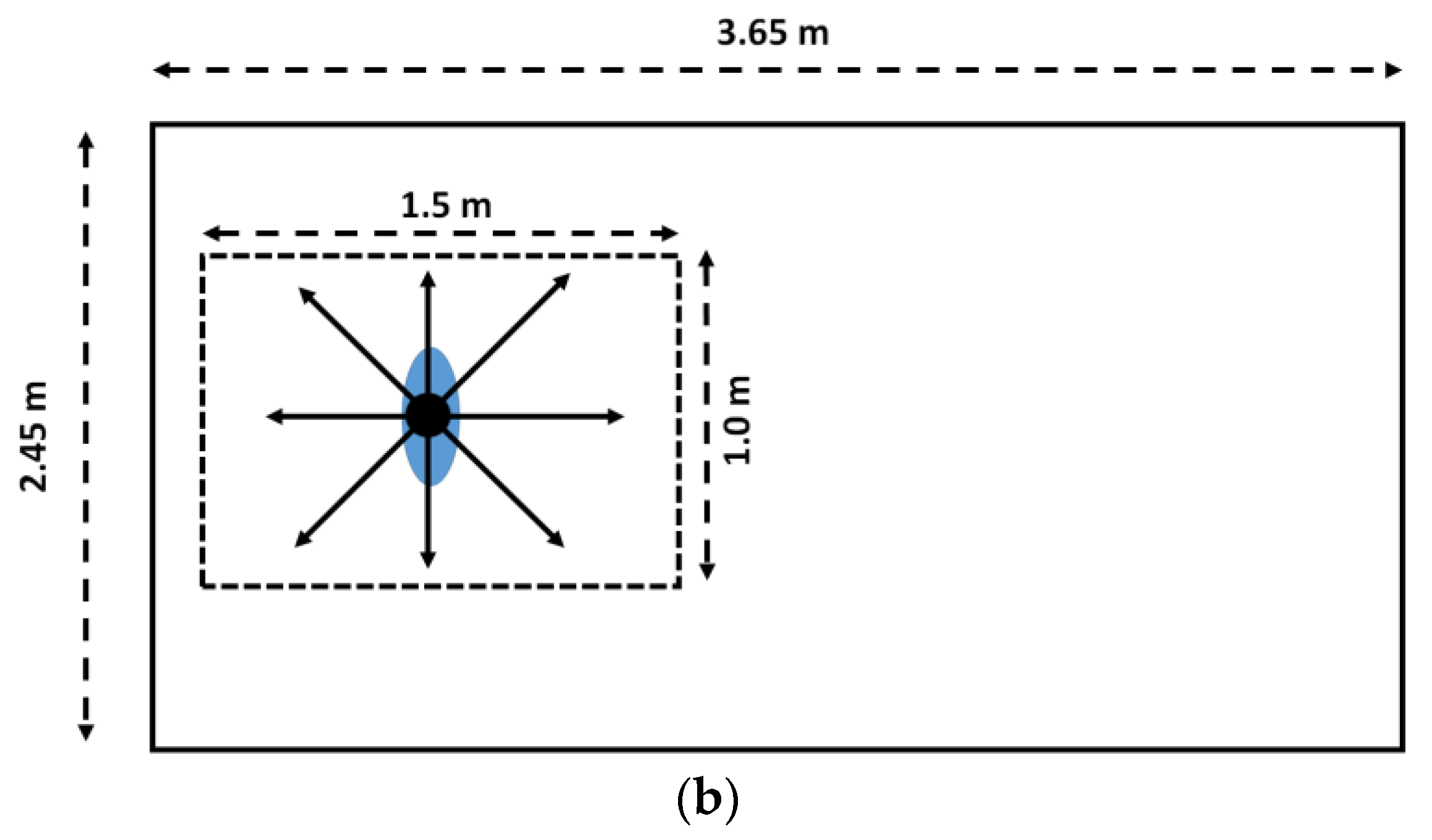
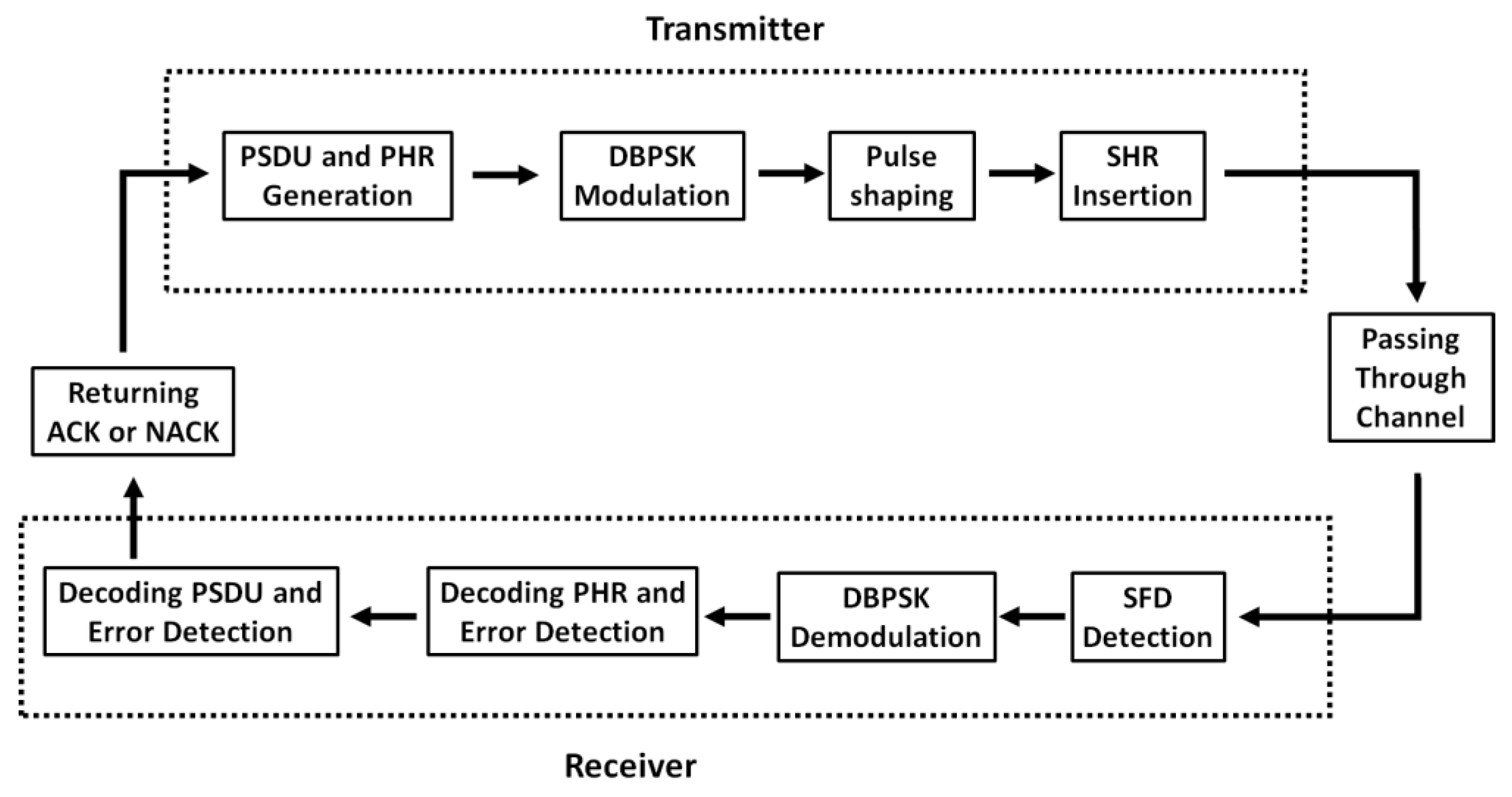



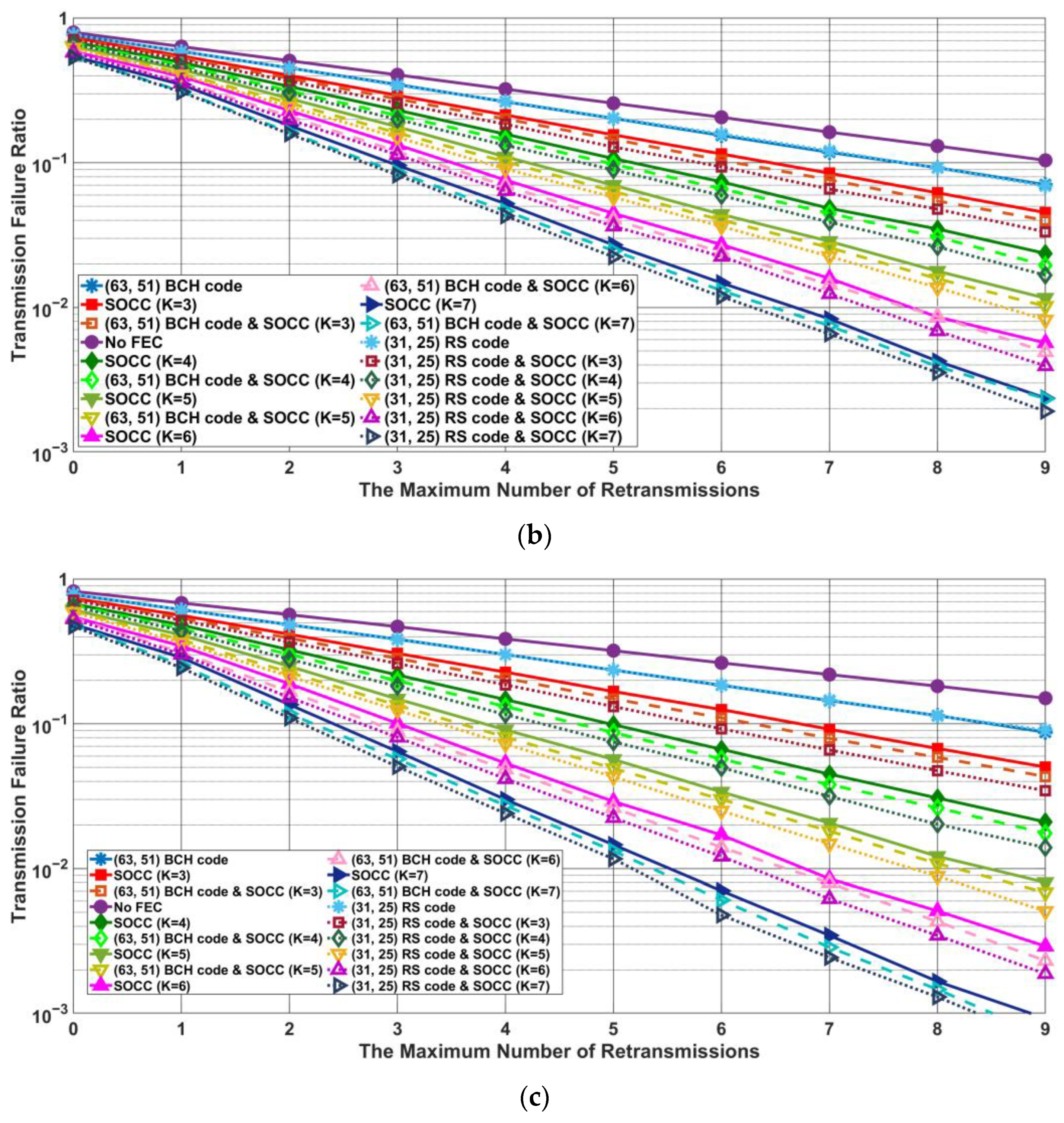

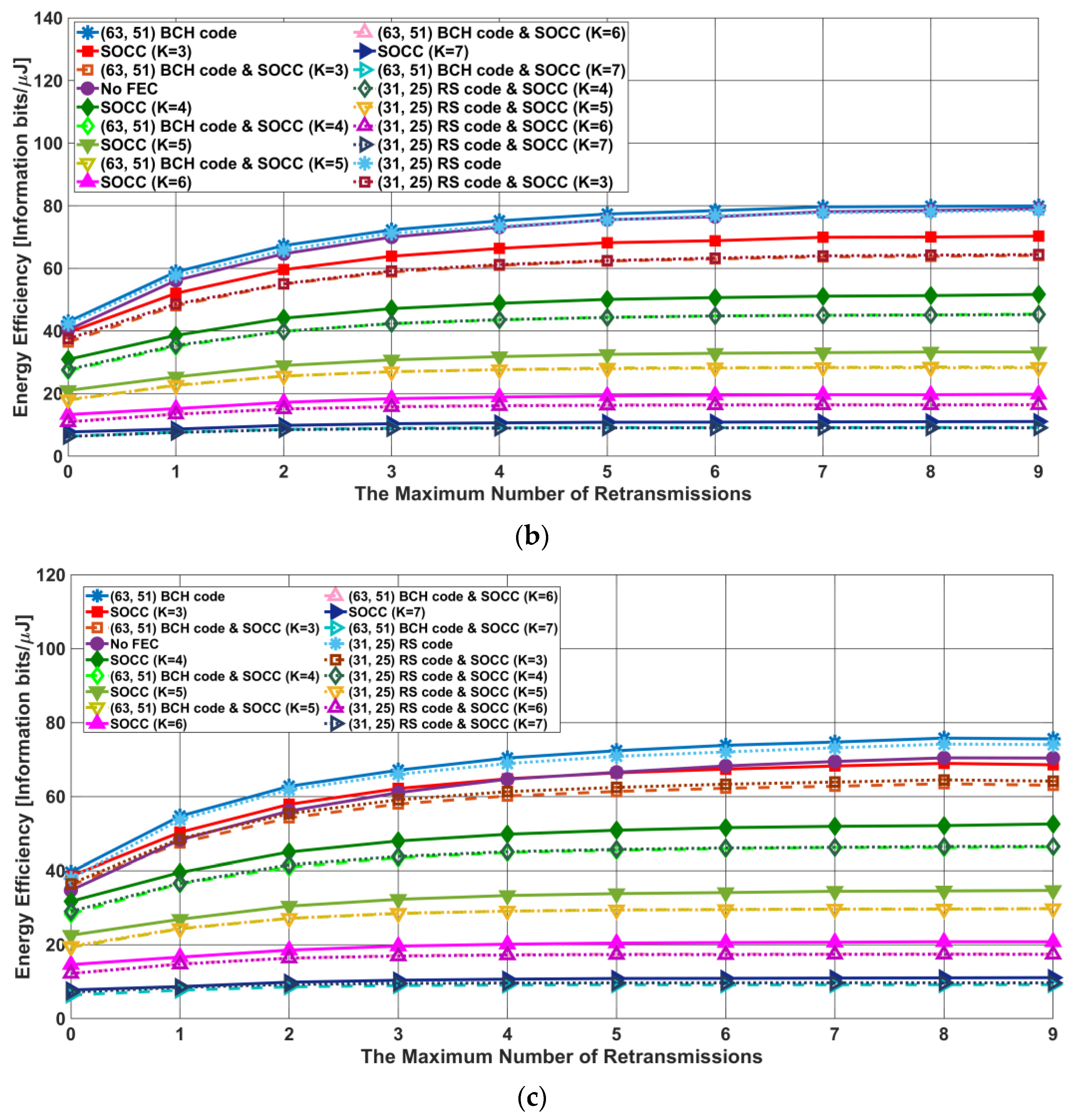
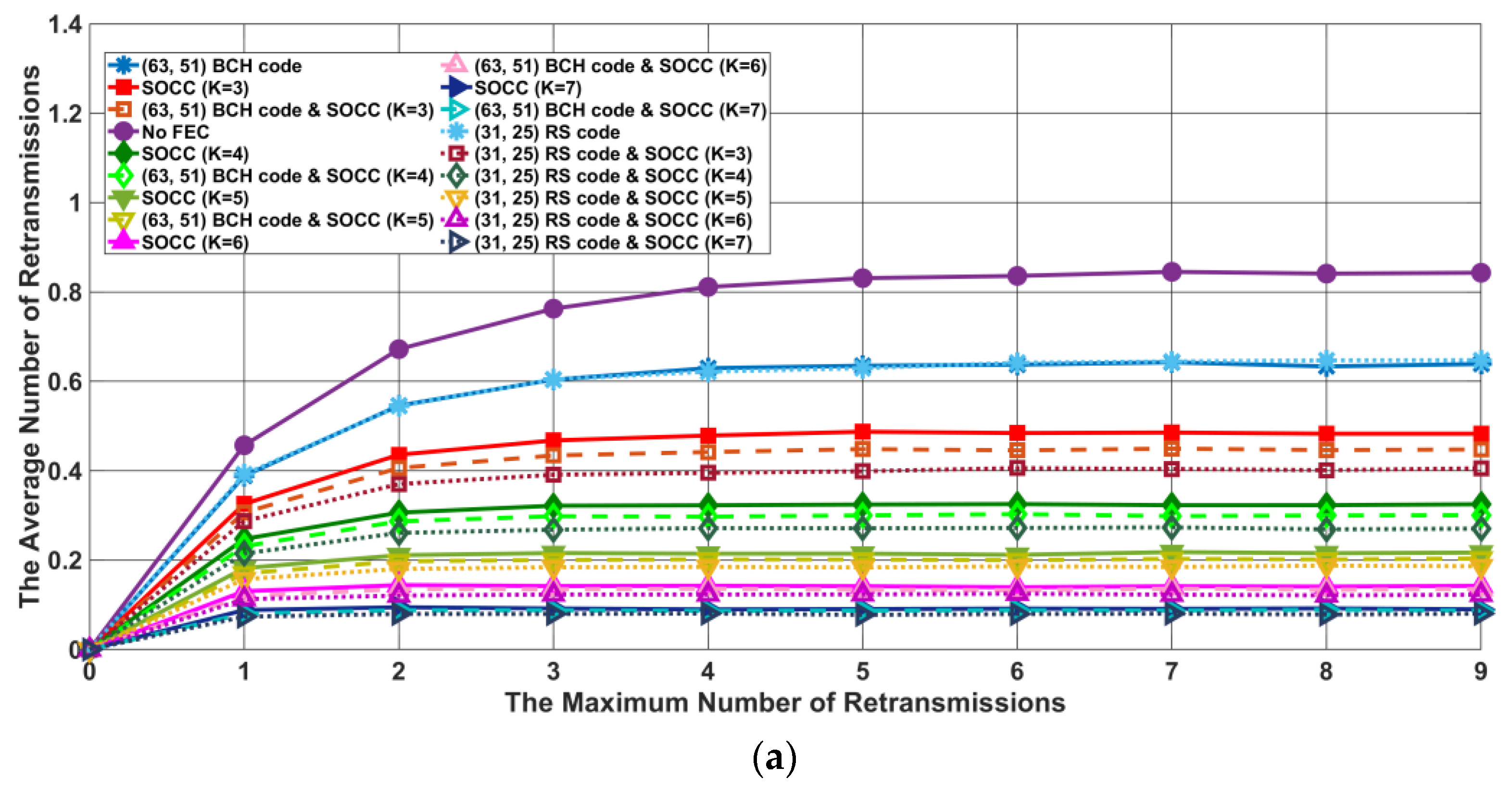
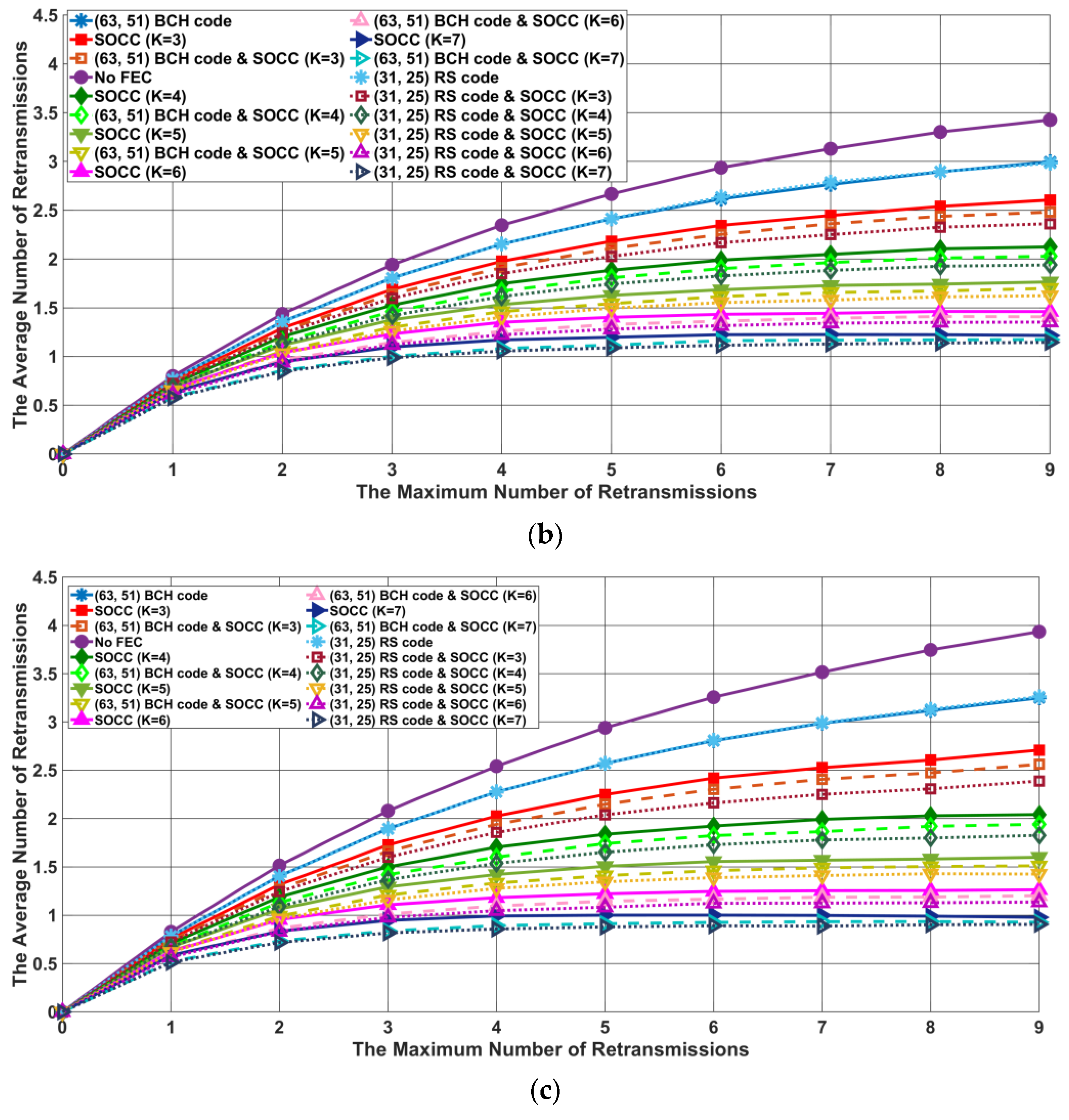
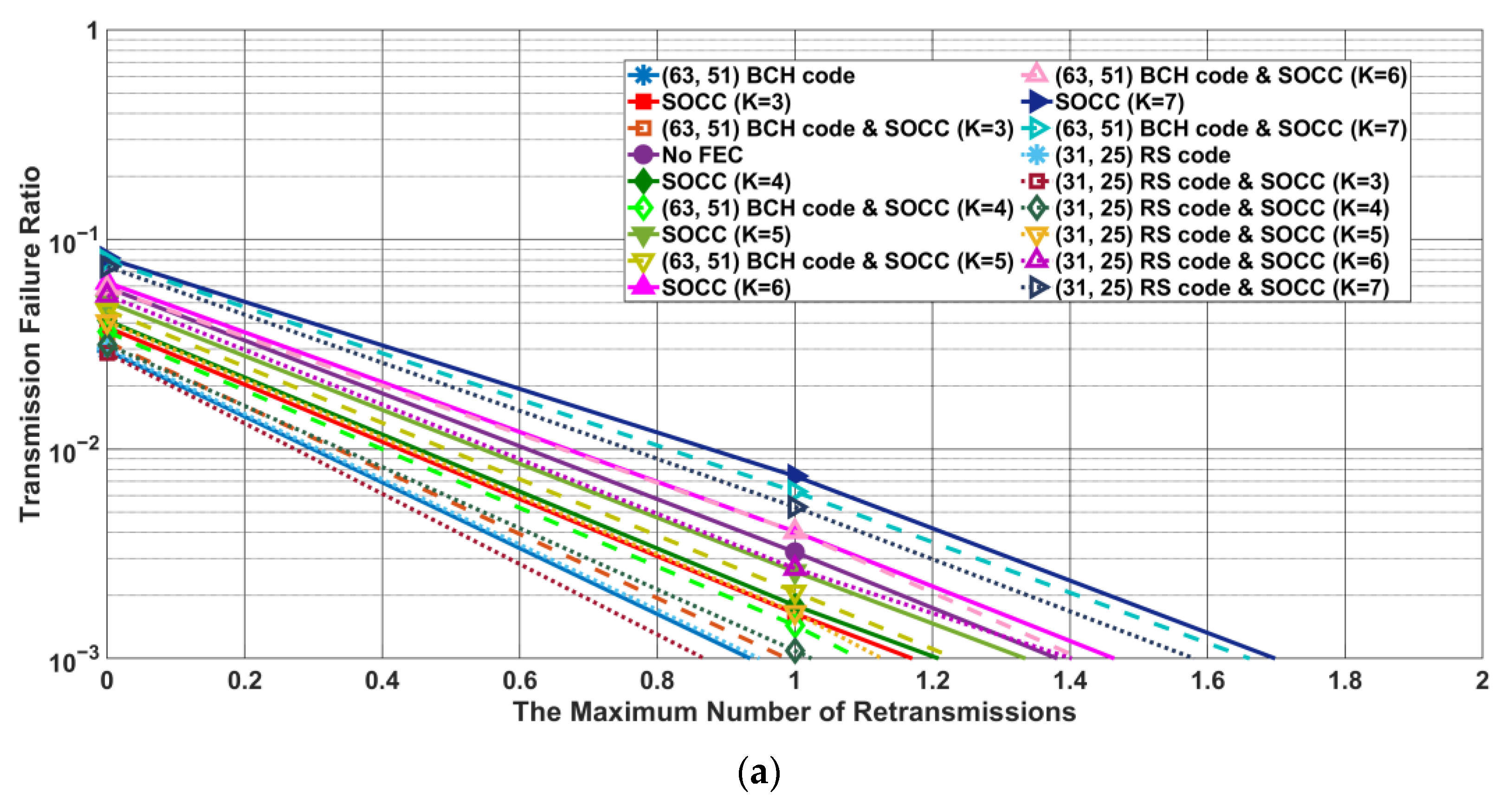
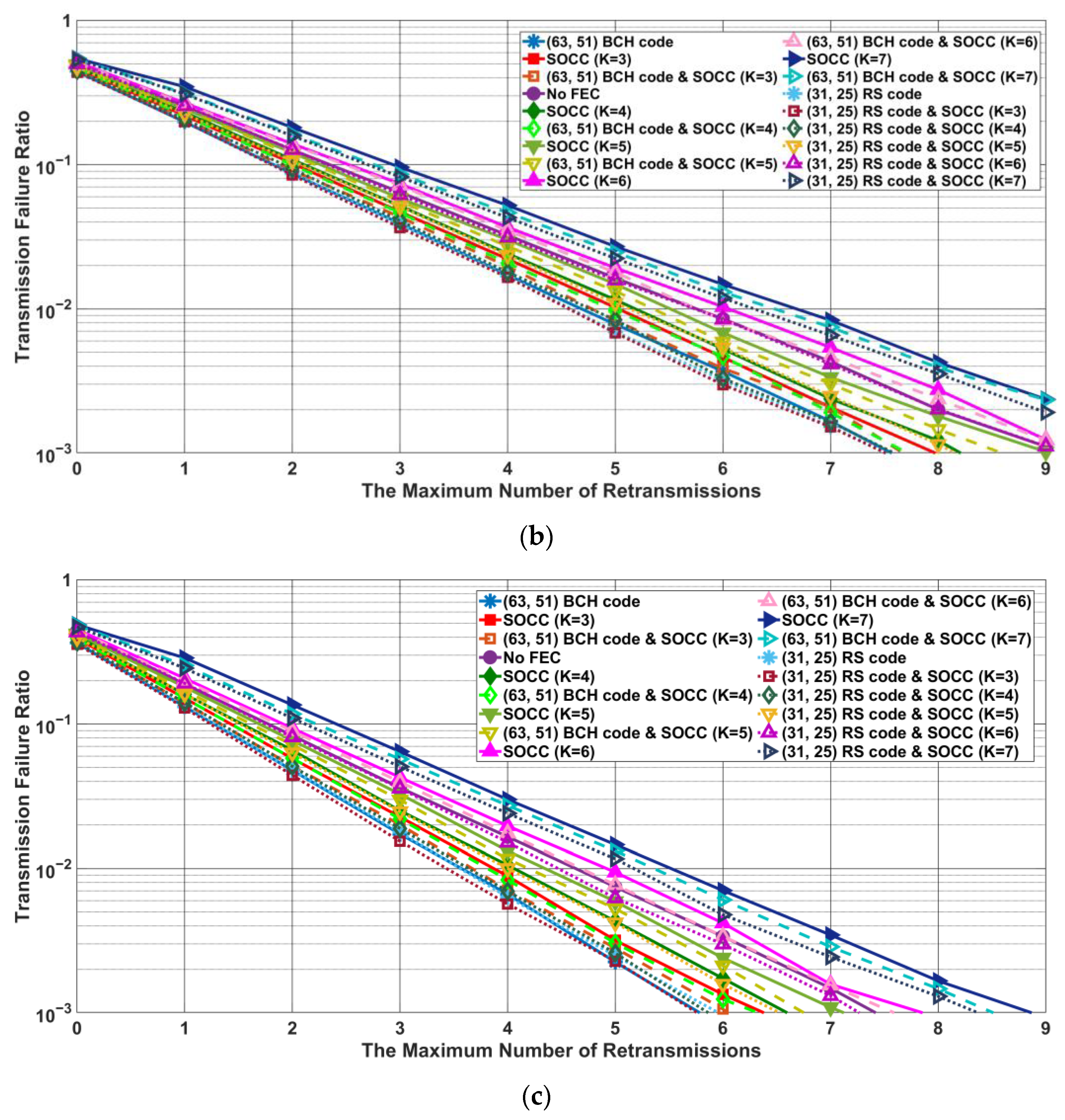


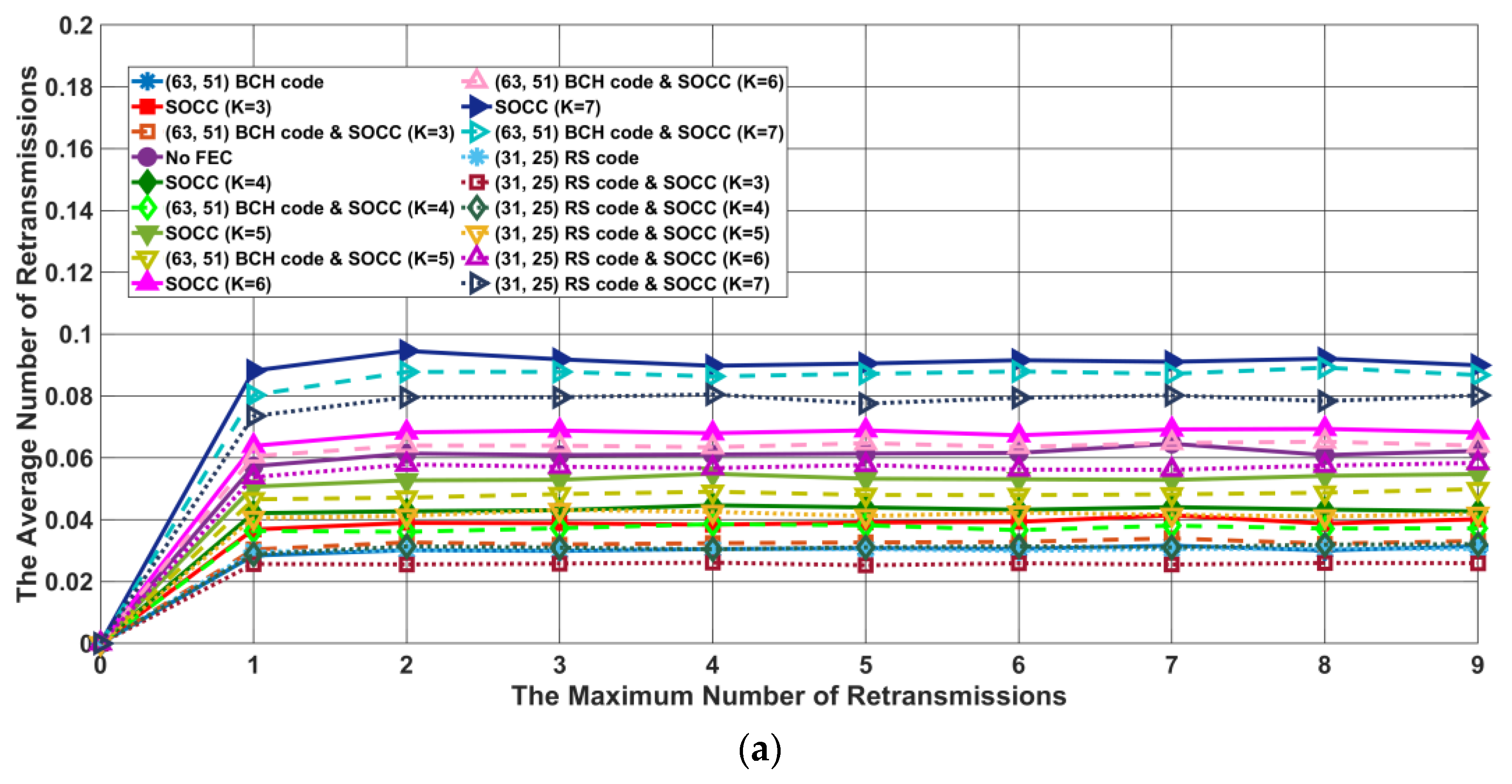
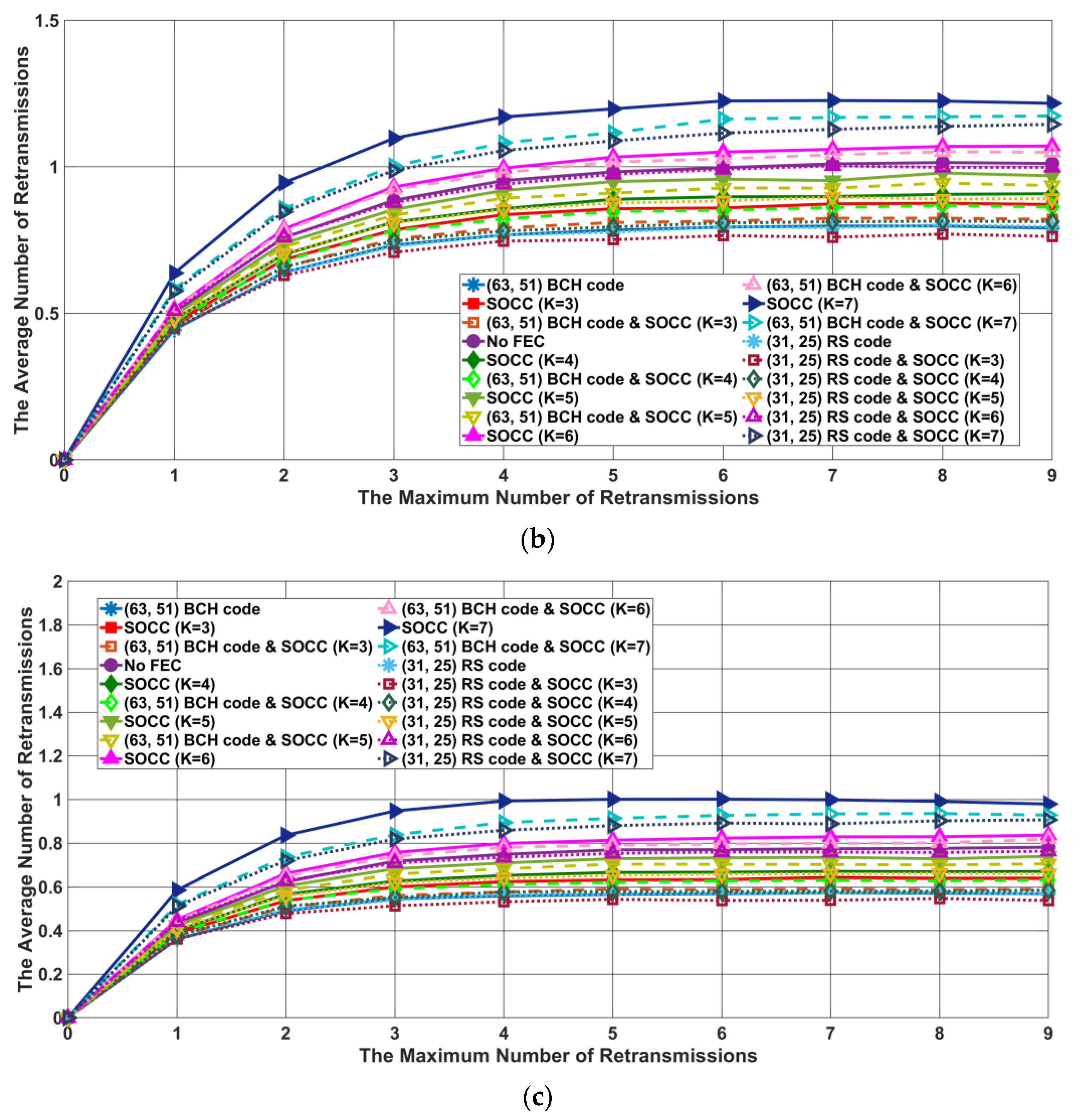
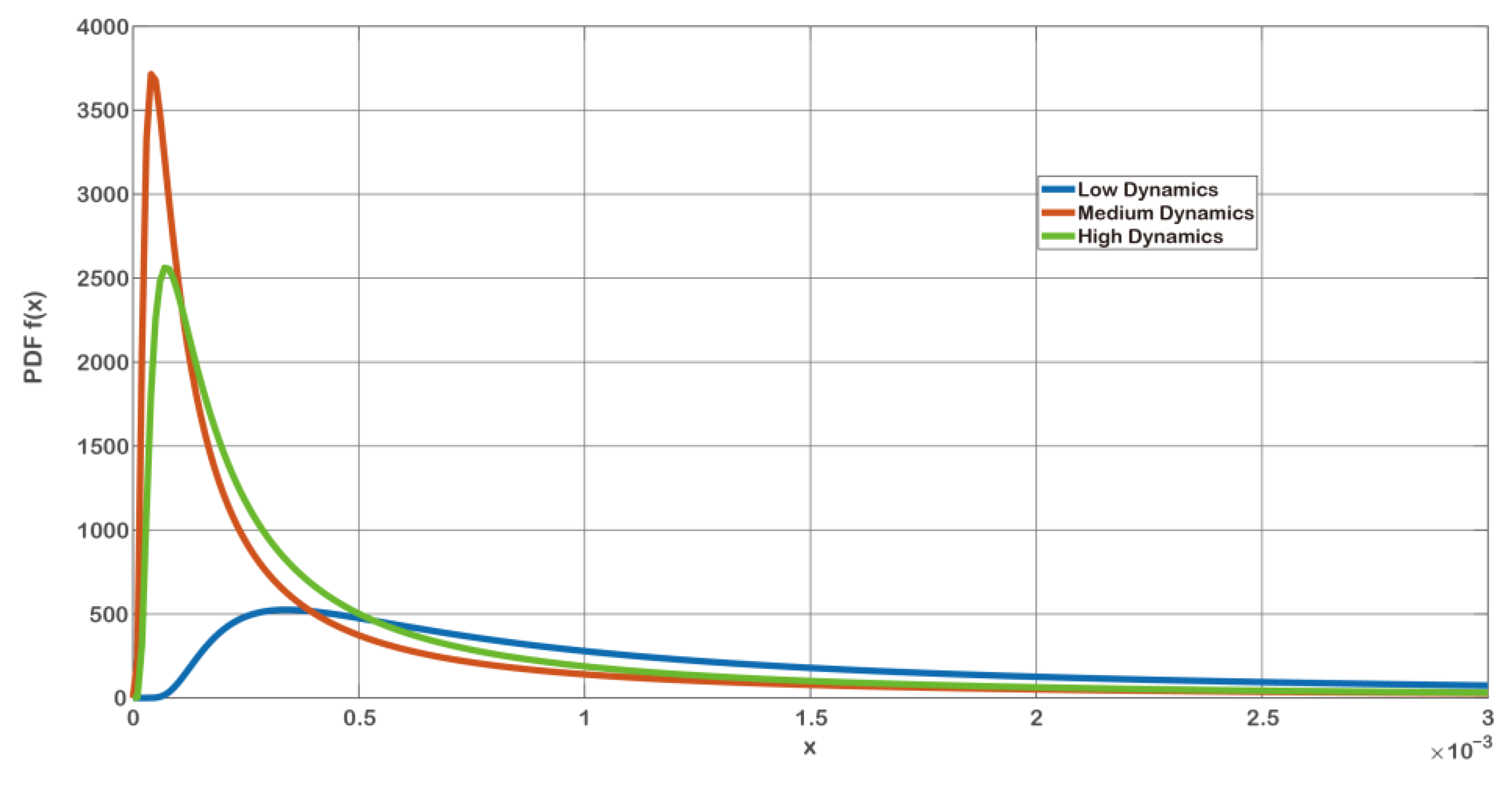
| 0 | 0 |
| 1 |
| Link Type | ||
|---|---|---|
| HD | MD | LD |
| RW-LA, LA-LW, RW-LW | LA-LE, LA-RE, AB-LW, CH-LW | LE-RE, AB-CH, AB-LS, CH-LS, LW-LS |
| Link Type | |||
|---|---|---|---|
| HD | MD | LD | |
| Parameter | |||
| 10.26 | 26.88 | 67.09 | |
| 2.22 | 1.30 | 10.23 | |
| Parameter | Details |
|---|---|
| Channel model | UWB-WBAN dynamic channel model [25] |
| Link type | LD, MD, HD |
| Center frequency | 7987.2 MHz |
| Bandwidth () | 499.2 MHz |
| Modulation | DBPSK |
| Forward error correction (PHR) | (40, 28) shortened BCH code, (11, 5) shortened RS code, SOCC () |
| Forward error correction (PSDU) | (63, 51) BCH code, (31, 25) RS code, SOCC () |
| Power spectral density emission () | −41.3 dBm/MHz |
| Thermal noise density () | −174 dBm/Hz |
| Implementation loss () | 3 dB |
| Receiver noise figure () | 5 dB |
| Information bit length () | 540 bits |
| Duration of () | 2.003 ns |
| Pulse option | Single pulse option, burst pulse option |
| Uncoded symbol rate of the single pulse option () | 7.8 Msps |
| Maximum number of retransmissions () | 1~9 |
| 1, 2, 4, 8, 16, 32 |
Publisher’s Note: MDPI stays neutral with regard to jurisdictional claims in published maps and institutional affiliations. |
© 2022 by the authors. Licensee MDPI, Basel, Switzerland. This article is an open access article distributed under the terms and conditions of the Creative Commons Attribution (CC BY) license (https://creativecommons.org/licenses/by/4.0/).
Share and Cite
Takabayashi, K.; Tanaka, H.; Sakakibara, K. Performance Evaluation of an On-Body Wireless Body Network Based on an Ultra-Wideband Physical Layer under a Dynamic Channel Model. Electronics 2022, 11, 3491. https://doi.org/10.3390/electronics11213491
Takabayashi K, Tanaka H, Sakakibara K. Performance Evaluation of an On-Body Wireless Body Network Based on an Ultra-Wideband Physical Layer under a Dynamic Channel Model. Electronics. 2022; 11(21):3491. https://doi.org/10.3390/electronics11213491
Chicago/Turabian StyleTakabayashi, Kento, Hirokazu Tanaka, and Katsumi Sakakibara. 2022. "Performance Evaluation of an On-Body Wireless Body Network Based on an Ultra-Wideband Physical Layer under a Dynamic Channel Model" Electronics 11, no. 21: 3491. https://doi.org/10.3390/electronics11213491
APA StyleTakabayashi, K., Tanaka, H., & Sakakibara, K. (2022). Performance Evaluation of an On-Body Wireless Body Network Based on an Ultra-Wideband Physical Layer under a Dynamic Channel Model. Electronics, 11(21), 3491. https://doi.org/10.3390/electronics11213491









